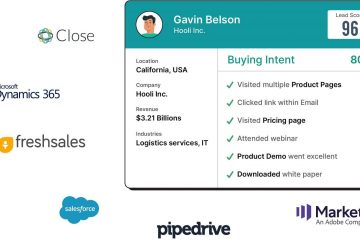Revenue Attribution – What, Why, and How?
Updated on 9th February, 2024
Marketers run campaigns on different channels – social media, search engines, emails, etc. Tracking conversions from these channels is fairly simple. You install the tracking pixels provided by these channels on your website and the pixels track conversions when they happen and attribute them to respective sources. Easy right? But, if it were that simple, what would bring you here?
The answer – you are a B2B business.
Conversion tracking works great for B2C businesses like eCommerce stores. You add conversion tracking to ‘Add to Cart’ or ‘Purchase’ modules and that is it. B2B businesses, on the other hand, have a complex selling process. The sales process takes months, has higher ticket values, has sophisticated pathways, and involves multiple decision-makers. Clearly, traditional conversion tracking alone won’t cut it. This is why we need marketing and revenue attribution.
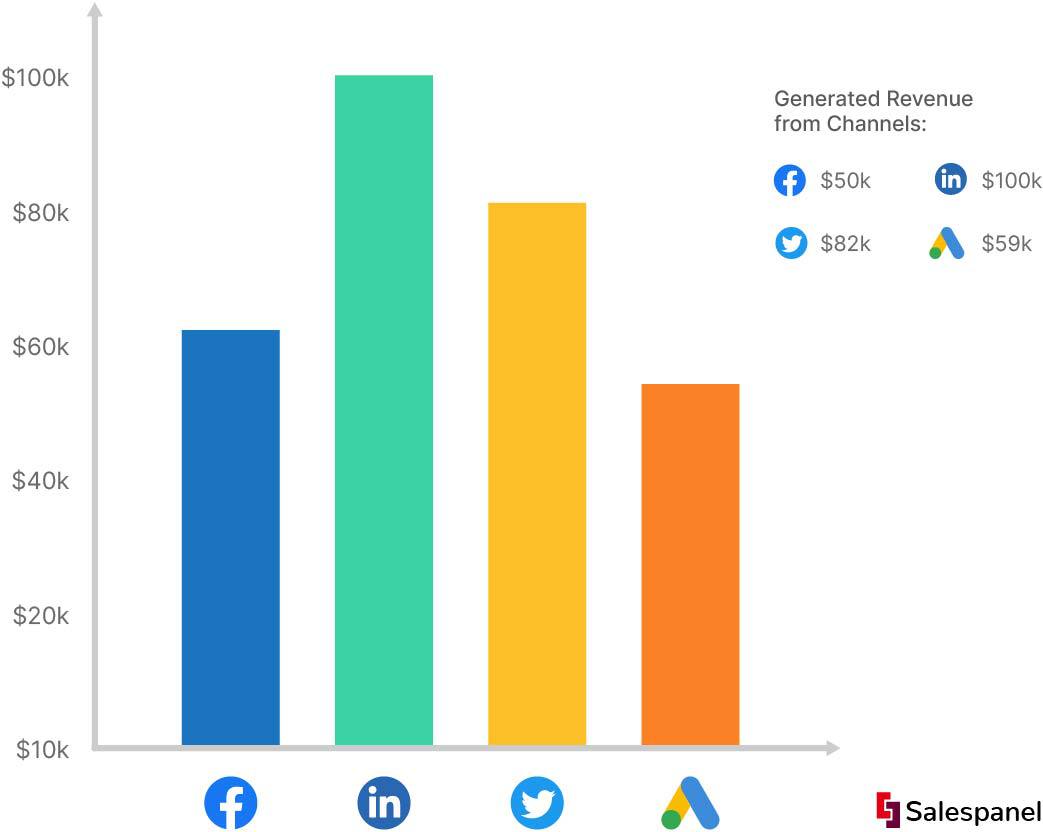
What is Revenue Attribution?
Here’s what a traditional funnel looks like…
Marketing teams generate marketing-qualified leads and that’s where their job ends. To serve qualified leads to the sales pipeline from where the leads would go to SDRs, BDRs, AEs, etc. You know the drill!
Now, this is a long and complex process and marketing can find it complex to connect the purchase with the original touchpoints. Where did the lead originally come from? Which campaign? Which ad copy? Which keyword?
Revenue attribution helps marketers connect purchases with various marketing touchpoints and activities. It can enable you to say something like “We have closed 30 deals worth $100k this month from our Google Search Ads on X keyword with a customer acquisition cost of $300.”
Revenue attribution can be considered a part of revenue marketing where marketing is connected to revenue. Aside from that, you can also know which channels are working and which are not and scale accordingly.
An Example of How Revenue Attribution Helps a Business
The most important outcome of attributing revenue is learning which marketing channels or initiatives drive the most sales. This allows you to streamline your marketing budget and make informed decisions about investing your limited resources.
Revenue attribution helps decrease cost per sale and, thus, increases marketing ROI. Here is an example:
A B2B SaaS company, XYZ, targeted at founders and CEOs in the project management sector, generated $1 million in revenue last year. They spent a total of $200,000 on marketing initiatives.
After analyzing revenue attribution, they identified that referrals from partner and affiliate sites contributed $300,000 in revenues, with most of that coming from eight partners. The company also earned $100,000 from its Google paid ads, while its Facebook ads generated $250,000 in revenue. Most of the remaining $350,000 came from organic initiatives, social media, and a couple of PR campaigns that featured the company’s product on the list of “Top 25 Emerging Project Management Tools of the Year.”
Taking this information into account, XYZ revamped its marketing strategy. They reduced spending on Google paid ads and instead funneled resources into organic marketing initiatives like their blog and other gated content on their website, social media channels like LinkedIn and Twitter, and partner collaborations. They even set aside a budget for influencer marketing. With these changes, XYZ expects to earn 30% more in revenue this year.
Benefits of Revenue Attribution
So far, we have talked about the analytical benefits of revenue attribution but that’s only one key benefit. Revenue attribution has butterfly effects in your entire selling process. Let’s look at all the benefits of revenue attribution.
Reporting
Need to generate revenue reports to show how exactly your campaigns have contributed to revenue? Revenue attribution will help you measure profitability of every campaign you run.
A survey conducted by Fournaise Group found that 80% of CEOs do not trust or are not very impressed by the work done by marketers. Ouch! Revenue attribution helps you change their perceptions and lets everyone know exactly how you contribute.
Resource Optimization and Scaling
Remembering the Pareto Principle, 80% of the outcomes come from 20% of the efforts. Revenue attribution helps you tie the specifics of your marketing activities to revenue and lets you know what works and what does not. This means you can spend less time and resources on mundane tasks that are not directly contributing to revenue.
Identifying profitable high-value channels also means that you can route your budget to those and scale them easily.
Lead Prioritization
Attributing revenue to channels and customer profiles also means that you can prioritize leads having desired attributes and coming from desired channels. Have you discovered that traffic coming from Linkedin belonging to the Hospitality industry with employee count between 50-200 converts the most? Why not prioritize them and have live chat reps attend to them when they are on your website?
Prioritizing leads means you put more resources on the best prospects which in turn translates to better quality customers.
Sales and Marketing Alignment
With revenue attribution, marketing can pass on projected revenue and other marketing attribution data to sales reps. This means they not only get to prioritize the bigger deals but also get key marketing information that can help them understand motivation and close deals more efficiently.
For example, if the attending rep knows that a lead came after searching a high intent keyword (which is a solution of your product), he/she can tailor the conversation to resonate with it. Also, knowing the ticket sizes will help reps maximize their productivity.
Solving the Limitations of Conversion Tracking
Conversion tracking, as I mentioned earlier, is fairly straightforward. It tracks specific events on your website and your advertiser’s platform and connects it to the visitor on a holistic level. What this basically means is that if you set up tracking on form submissions, you will get to know how many people filled out the form and from which campaigns they came from.
For example, if you are selling a $10 product and the purchase happens in a short span of time, everything is tracked on time and the report looks great as you look at data of thousands of customers. Now, how does that resonate with a $50k deal? The original lead comes from one computer and his/her colleagues visit from other computers and the deal goes on for weeks. Maybe, months…
This is where you need attribution. Revenue attribution tracks the entire customer journey from multiple touchpoints and connects these touchpoints to revenue generation. So, while conversion tracking connects X to Y, revenue attribution connects the entire story. From there, you can analyze the data to know what sales and marketing engagements are actually impactful. For example, let’s say a re-engagement email got a cold lead back to your website who was then impressed by a specific piece of content. This lead, later down the line, purchased your product.
Attribution will help you understand the causes and effects and connect to revenue.
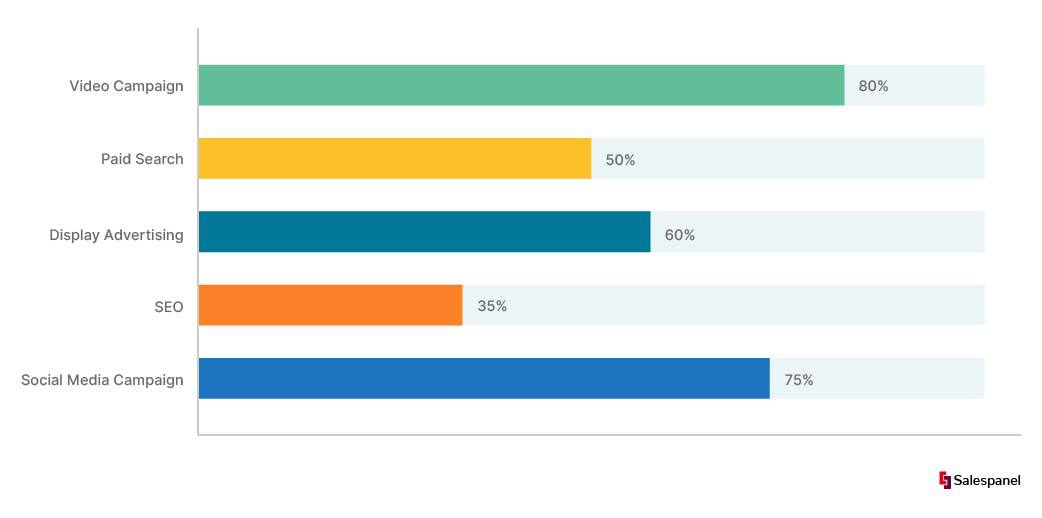
How to Get Started With Revenue Attribution
1. Set clear revenue goals
Solely focusing on final conversions and sales metrics can have long-reaching negative effects on business growth. More than 60% of marketers still measure marketing effectiveness through sales.
You can be averaging above market standards in sales, but the true standard for business growth is revenue. Thus, before you start allocating revenue to different marketing verticals, you need to set clear revenue goals. Setting an expectation of the revenue you propose to make and ensuring your team is on the same page and working towards it, is crucial before you start with revenue attribution.
2. Track leads and visitors on an individual level
Setting up revenue attribution is best done by tracking every individual customer’s journey from awareness to purchase, to monitor and accurately gauge their movements closely. This helps you identify things about your website or ads that you can further optimize for conversions.
For this purpose, you can use Google Analytics. You can track individual users on Google Analytics using a unique user ID, consisting of alphanumeric characters. But GA provides anonymized data, which means you can never know proper details about the lead that converted into a customer and contrubuted to your revenue.
This is where third party tools that visualize customer journeys coome in handy. With access to customer journey tracking, your sales and marketing teams will be able to trace every touchpoint a particular user has across numerous channels and sessions. They can acquire a better understanding of which ads and landing pages a visitor looked at, prior to converting.
3. Aggregate data from different sources onto a single platform
Now, capturing marketing data alone, isn’t enough—if you don’t store it somewhere. The best place to store all your marketing data, gathered from various channels over a relatively long period of time, is a CRM.
A customer relationship management (CRM) platform ensures that your teams have access to the same data and have a comprehensive understanding of the customer’s experience with your brand.
With a CRM collating your data, you’ll be able to determine the efficacy of your campaigns at each level of your sales pipeline, as leads go down the funnel. For instance, in the example cited above, company XYZ dropped their Google paid ads campaigns because they contributed the least part of the revenue. This doesn’t mean the ads didn’t generate leads. They simply might have had a low lead-to-opportunity conversion ratio. This is what a CRM helps you identify.
Thus, using a CRM as part of your revenue attribution plan is a no-brainer.
4. Allocate revenue to original source of marketing
Once you close the lead, it is time to attribute the revenue to the right marjeting initiative.
There are many tools in the market today, that help match each revenue-generating opportunity back to the marketing campaign, channel, keyword, and more.
Your marketing team can use this information to create reports that detail accurate values for marketing-generated revenue.
Revenue Attribution Models
Attribution models can either be Single-Touch or Multi-Touch.
Single-Touch
In single-touch attribution, you attribute conversion to only one touchpoint. So for example, if you are attributing to the original visitor source and the customer originally came from a Facebook Ad, the campaign gets credited when the conversion happens. This will always be the case even if the customer was compelled to purchase after reading an email from you.
Using single-touch attribution, you connect revenue generation with a particular action, something which can easily be done with conversion tracking. And, this is something B2C businesses will use because the purchase happens relatively fast and attributing to one key action is usually enough.
Single-touch attribution is usually done through either first touch or last touch.
First Touch
This attribution strategy credits conversion to the very first touchpoint. No other touchpoint is credited in this model. For example, if 100 customers buy a $100 product coming from a Facebook ad campaign, the revenue for the campaign will be marked as $10,000 and all the credit for conversion will be given to the campaign.
This is by far the most common B2C attribution strategy and uses conversion tracking provided by the distribution platform (Google, Facebook, Twitter, etc.). This model is also useful for B2B businesses.
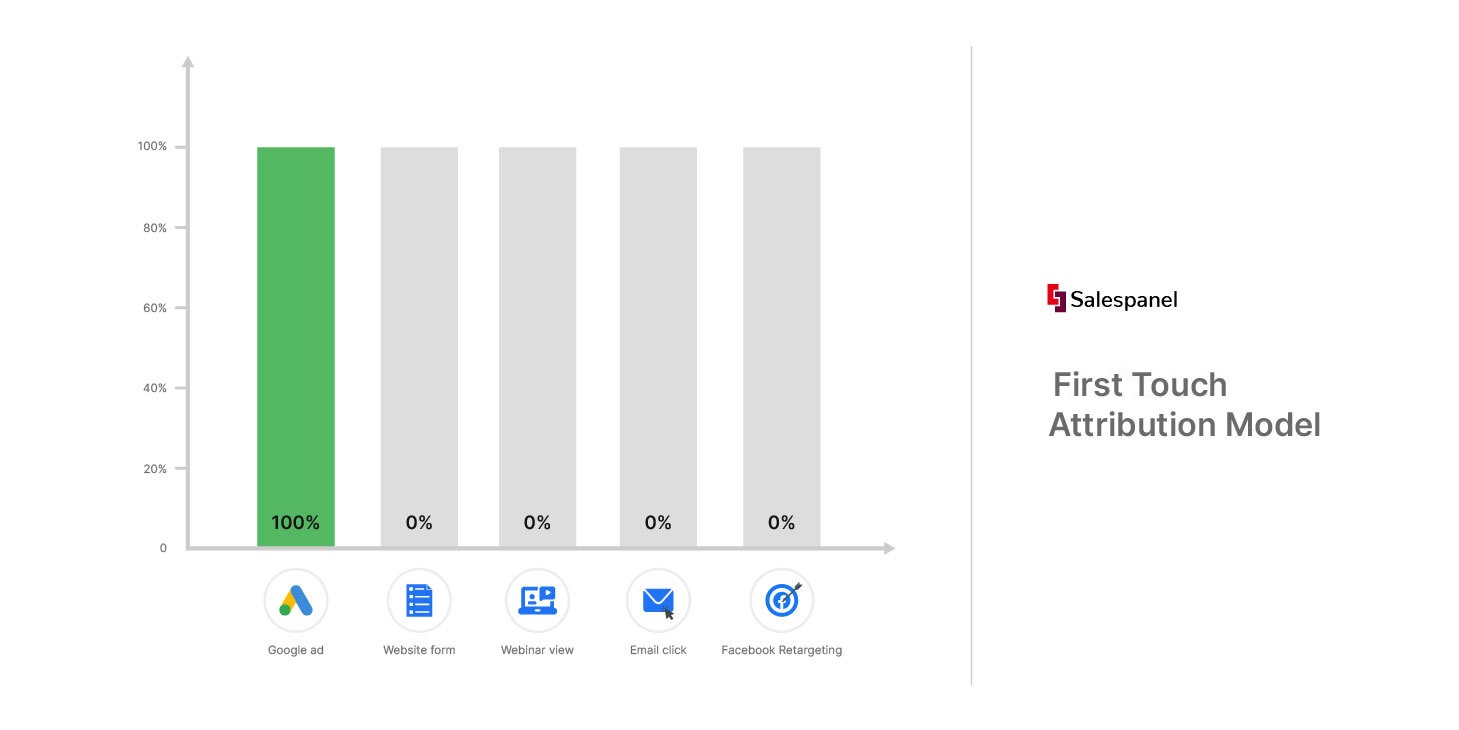
Last Touch
The last touch attribution model credits the final action the user takes before converting. For example, if a lead receives an email with a discount coupon and the purchase gateway link and goes ahead to purchase, the email with the coupon is what gets credited for the conversion.
The idea behind this stems from the fact that the last touchpoint made the customer convert. This might be an email with a discount coupon, a pop-up, or simply critical information. Unlike first touch attribution, this does not aim to connect campaigns to revenue. Instead, it wants to know touchpoints that are purchase influencers.
The biggest advantage of this strategy is that it has very little room for error. Why? Let’s think of this scenario. A visitor comes to your website after interacting with an ad on Google Search using a desktop. Now, this person gets added to your audience through the Facebook pixel and sees a retargeting ad from you later while browsing from a mobile device. If you were using first-touch attribution, joining the dots here would be very hard. But, with last-touch attribution, the last action the user performs before the conversion happens from the same ‘session’. This leaves very little room for error.
If you are a B2B business, once you master single-touch attribution, it is time to graduate to multiple-touch.
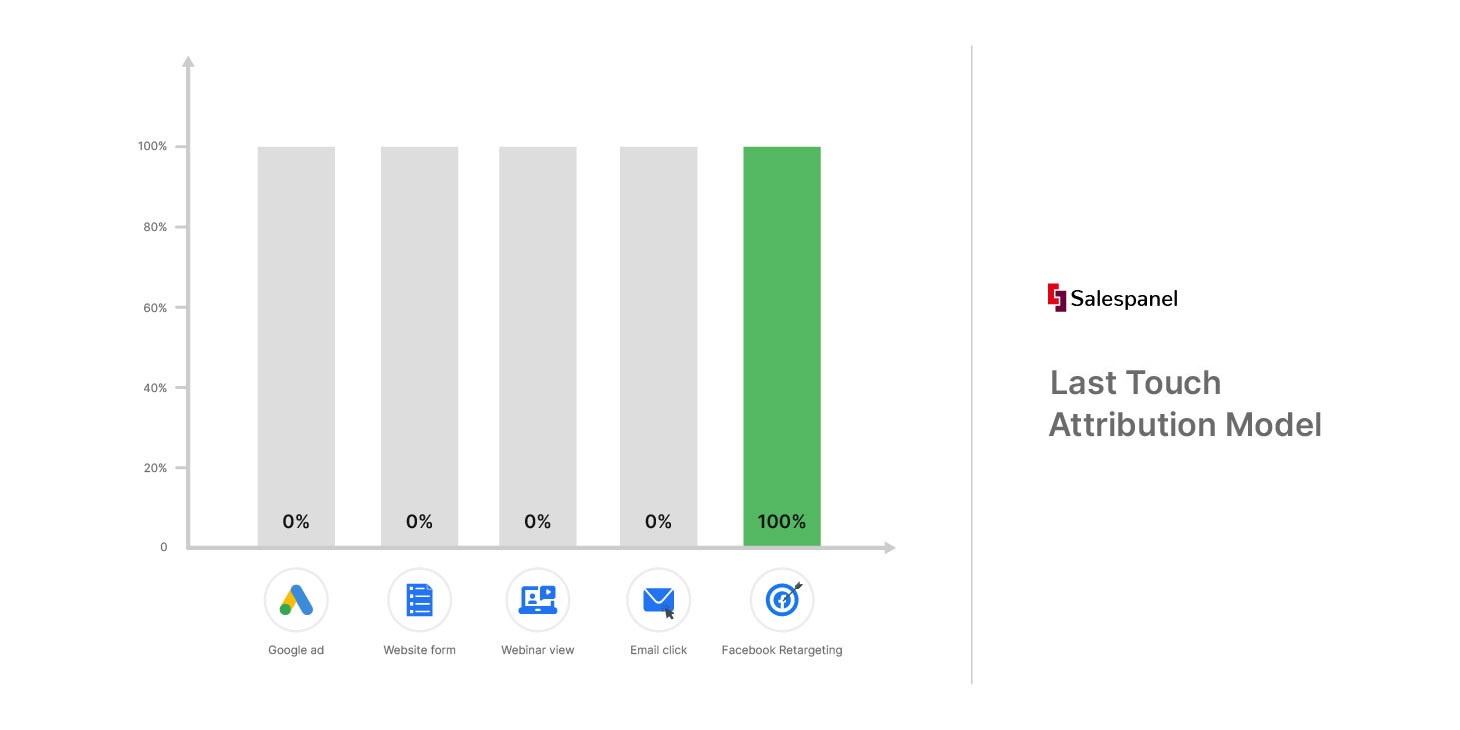
Multi-Touch Attribution
While discussing single-touch attribution, the shortcomings of it became very apparent. You can only credit one particular event for the conversion and it works for one person who is the lead and the buyer. But, in B2B, there are several moving parts – several touchpoints that heavily influence conversion, several decision-makers, several sales reps, and a long and complicated process before purchase. Therefore the need for understanding the effects of different touchpoints is evident, especially when you are closing 5 or 6 digit ACV deals.
Multi-touch attribution is what B2B businesses need and it is what we have focused on, in this article. With this model, several touchpoints are weighed and credited for the conversion.
Linear Attribution
In a linear model, all chosen touchpoints in the customer journey are given equal weightage. So, if filling out a form is a touchpoint and watching the product webinar another touchpoint, both are credited equally for the conversion.
The advantage with this is that it is a fairly simple model where you don’t have to scratch your head and decide which touchpoint is more important. This advantage is also its downside. Not all touchpoints are equal and using this model, it is hard to understand which touchpoints contribute more to the conversion.
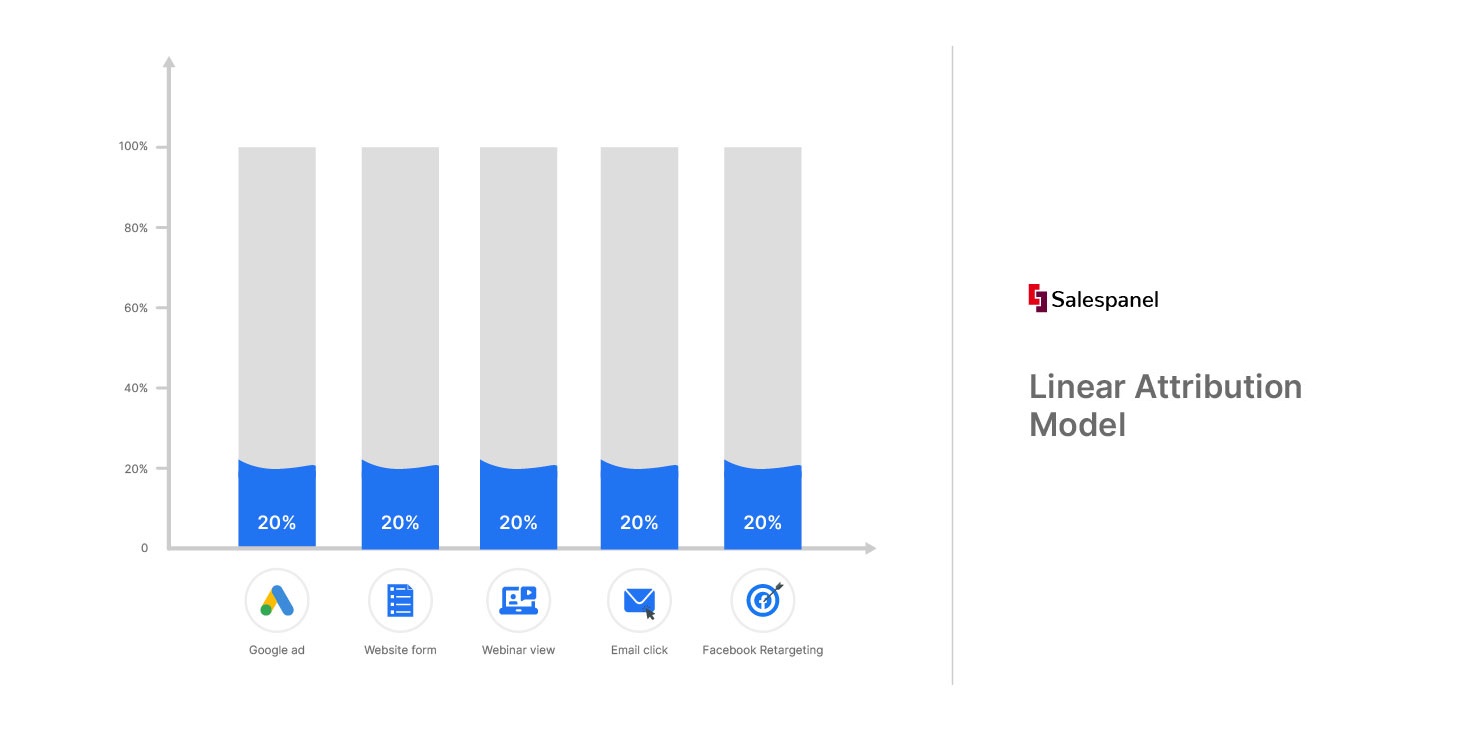
Time Decay Attribution
The time decay model credits touchpoints based on the time of interaction. In most cases, the most recent touchpoints are credited more for the conversion.
This model can be considered a more sophisticated version of the last touch model. A spiritual successor, if you will. Instead of attributing only to the last touchpoint, it makes the assumption that the later touchpoints are more important for the conversion than the earlier touchpoints and credits points accordingly. While it gets things right where later engagements drive leads to purchase, it also disregards initial touchpoints which are key to revenue attribution.
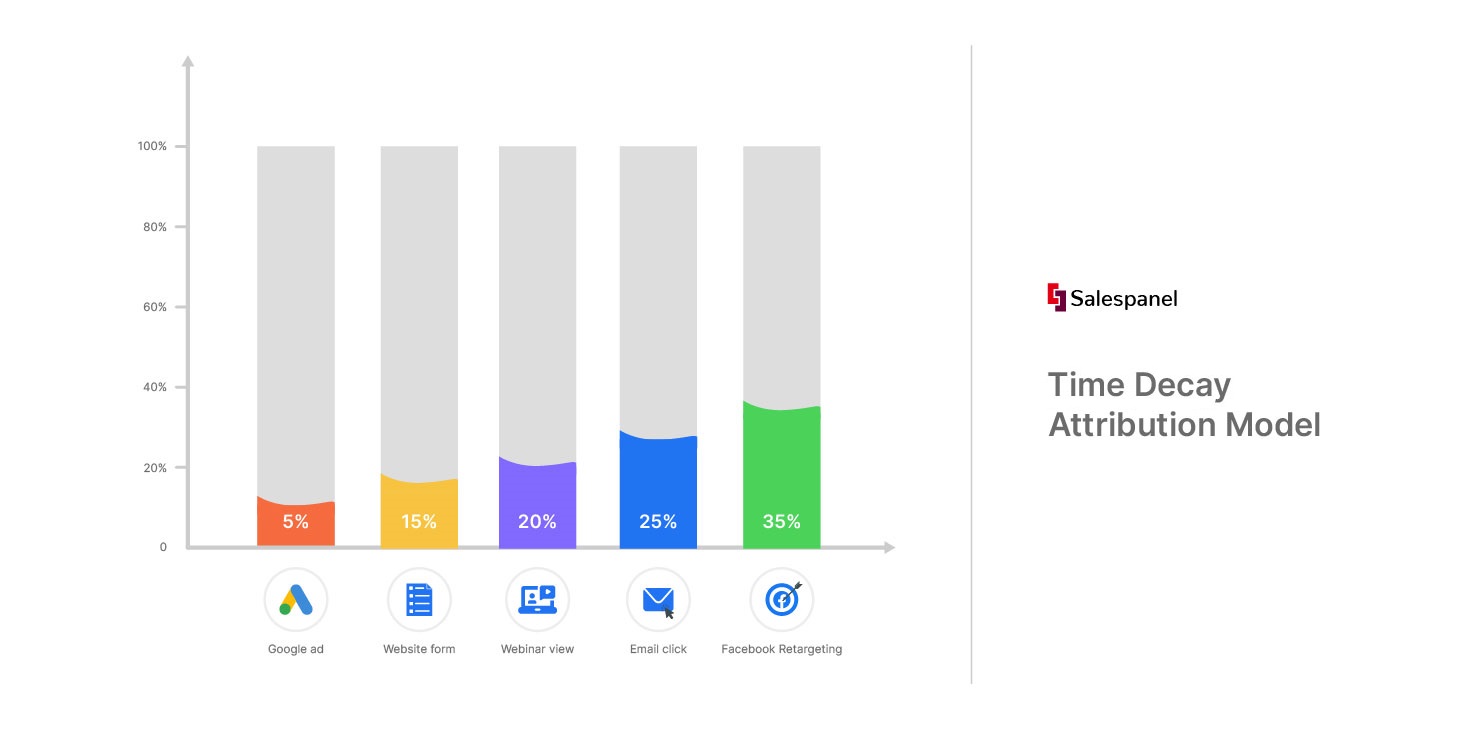
U Shaped Attribution
The problems of the Time Decay model are solved with this model. The U-shaped model gives more importance to the first and last touch than the rest of the funnel. This is the most balanced model considering the fact that you attribute what brought the lead and what got them to purchase at the end of the day.
While the U-shaped model prioritizes the crucial first and last touchpoints as they are important for the sale, it downplays the middle of the funnel. This is a problem because the middle of the funnel is what keeps the customer engaged. But, compared to other models, this is still the most balanced attribution model.
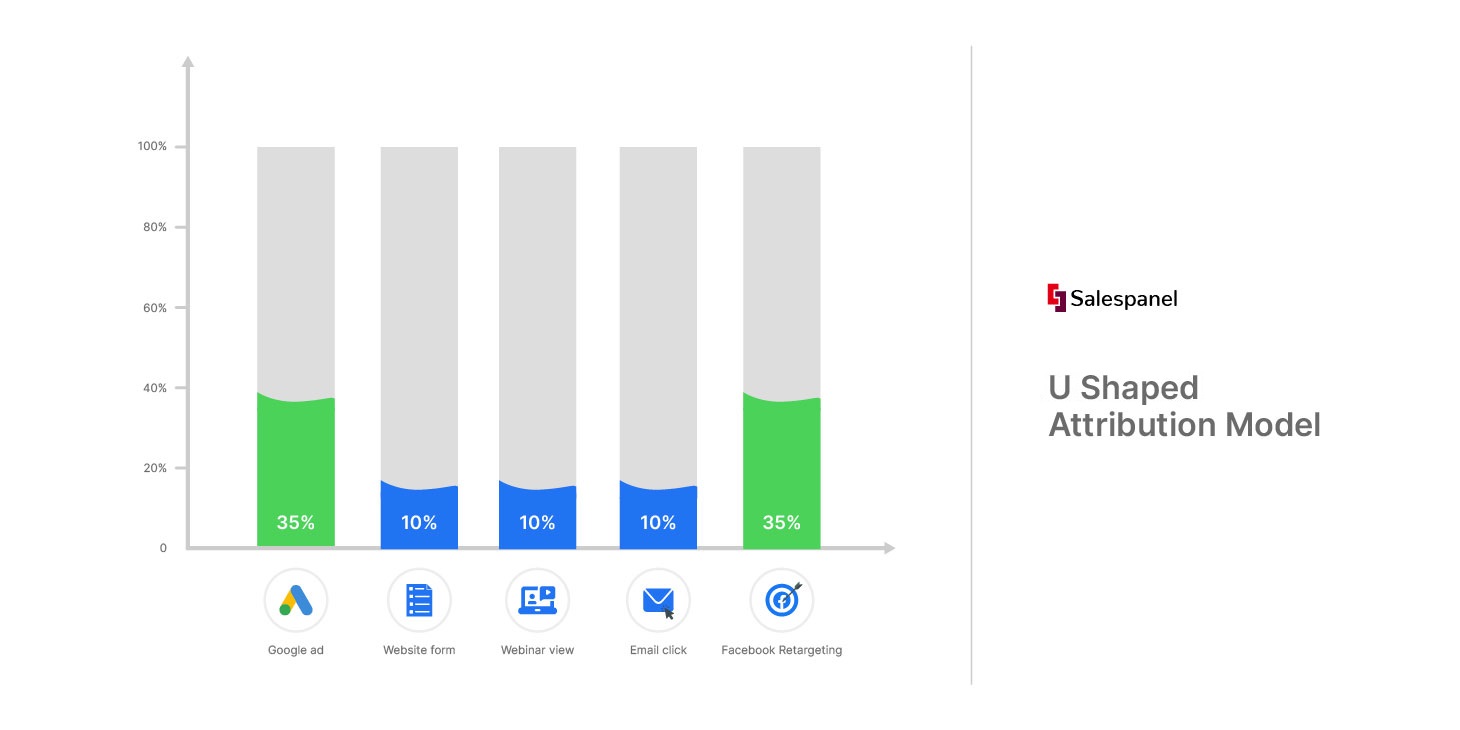
How Does Revenue Attribution Differ From Conversion Tracking
Conversion tracking is a popular tool marketers use to track form submissions, email signups, and other website micro-actions. While this offers useful engagement data, stringing a dollar value to conversion is needed for a clearer picture. This is especially the case for B2B businesses where a low volume and long sales cycles combined with higher varying ticket prices make tracking harder.
Revenue attribution is better suited to provide deeper insights and solve this problem. It evaluates every touchpoint’s contribution to boosting sales by examining the complete customer journey across all channels. Revenue attribution is more concerned with the big picture as compared to traditional marketing, especially with how marketing moves prospects along the sales funnel.
Let’s explain this better with an example.
Given below are two Google Ad campaigns.
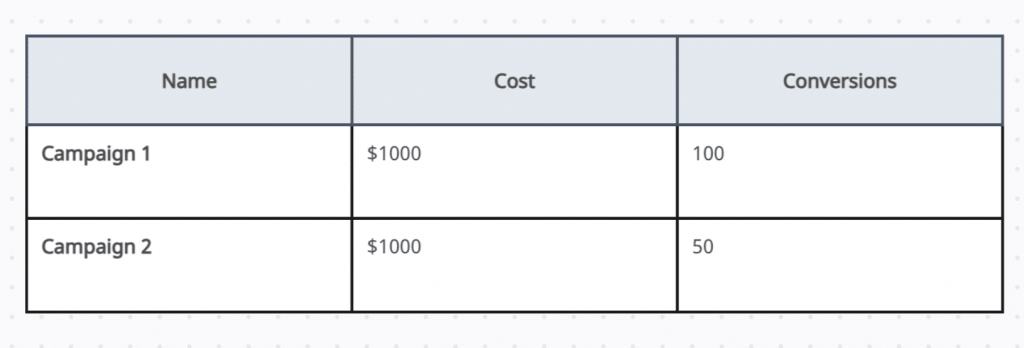
Campaign 1 stands out as the clear top performer when conversions are the main focus. It generated double the conversions for the same price as campaign 2.
However, that outcome is altered when we include revenue data in the equation.

We can now see that, despite campaign 1 having the highest conversion rate, campaign 2 brought in the most money. In essence, revenue attribution provides a completely new perspective of your campaign’s effectiveness, one that can be used to help you make better choices.
Revenue attribution (in parallel to touchpoint attribution) analyzes every consumer encounter across all marketing channels. This shows the complete path from the initial website visit to the ultimate transaction. Every interaction has a connection to the underlying marketing initiatives. Once that is determined, algorithms can assign a proportionate amount of revenue to each touchpoint.
The full-funnel study shows the actual revenue impact of marketing. Based on the data, marketers can direct money to channels that are functioning well when they have good visibility while improving on or eliminating poor performers. With proper attribution, CMOs may maximize expenditure for return on investment. Campaigns can be swiftly modified by using revenue data rather than conjecture. This makes revenue attribution crucial for today’s responsible marketers. It offers the thorough analysis needed to increase revenue in a quantifiable manner.
Revenue Attribution Best Practices
It takes time to get revenue attribution right, but if you are serious about it, here are five best practices you can lead with.
1. Choose KPIs to track for attribution before you start
There are a lot of metrics to track, but if you don’t select your attribution KPIs early, the whole strategy can go south pretty fast.
There are three things you need to do:
- Choose which KPIs you want to track for marketing and sales initiatives
- Build KPI-specific dashboards
- Measure the accuracy of the reporting information
Data tracking is a complex task, and you cannot miss any touchpoints if you are to make informed decisions precisely.
2. Connect marketing and sales channels
For more insightful attribution information, you should focus on aligning the sales and marketing departments at your organization.
To begin, this method integrates marketing and sales efforts to present a unified customer journey. It also assists your team in identifying gaps in personas, KPIs, and customer data. This not only assists your team in determining which marketing campaigns generate the most traffic, but it can also enhances the quality of leads you qualify for sales and also, the marketing ROI.
3. Implement automation wherever you can
Marketing automation is very popular in today’s digital marketing landscape and helps marketers to save time by triggering automatic email send-offs or posting on social media, based on a pre-determined schedule. Automation can thus, greatly enhance the amount of outreach, without increasing the size of your team. It can also assist you in developing more focused personalized campaigns.
This increase in volume of marketing activities can improve the amount of data available to your team to drive your attribution models and strategies.
4. Connect marketing activities to business goals
Revenue attribution helps you make informed marketing decisions. But how? Once you know which avennues the money is coming from, you can discard ones which are not working, invest more money into the one that are driving major revenue, and finally, introduce new initiatives based on industry patterns and trends.
When marketing tactics are linked to business goals, metrics become more meaningful to other parts of the business. Then, using revenue attribution, you may determine which of your marketing initiatives is most effective in achieving your goals and supercharging its growth.
5. Start small and be ready to scale up
It is highly advisable to start cross-channel monitoring with a single campaign. It enables both marketing and sales team members to have a positive recourse and jointly familiarize themselves with the outcomes of revenue attribution.
You’ll also be able to evaluate the functionality of whatever tools and technology you are using and make any necessary changes to your data inputs, formatting of your findings, or even internal procedures. Concentrating on a single campaign can also give you an indication of how your content performs across social media, email, and other online marketing channels. When you have thoroughly examined all of your historical marketing data, you may compare the results and discuss any implications you discover.
Final Thoughts
In an increasingly competitive business landscape, marketers today are completely responsible for linking their marketing activities to revenue opportunities. With revenue attribution, you may be able to better assess your offline and online marketing activities and allocate funds correctly to getting more qualified leads.
The attribution models listed above can help you get started. You must understand though that there is no “one-size-fits-all” strategy here—the model you create will be based on what is important for you to understand revenue channels and expand them. Different companies create different customer journeys, ssuited to their unique business needs.
Sell more, understand your customers’ journey for free!
Sales and Marketing teams spend millions of dollars to bring visitors to your website. But do you track your customer’s journey? Do you know who buys and why?
Around 8% of your website traffic will sign up on your lead forms. What happens to the other 92% of your traffic? Can you identify your visiting accounts? Can you engage and retarget your qualified visitors even if they are not identified?
